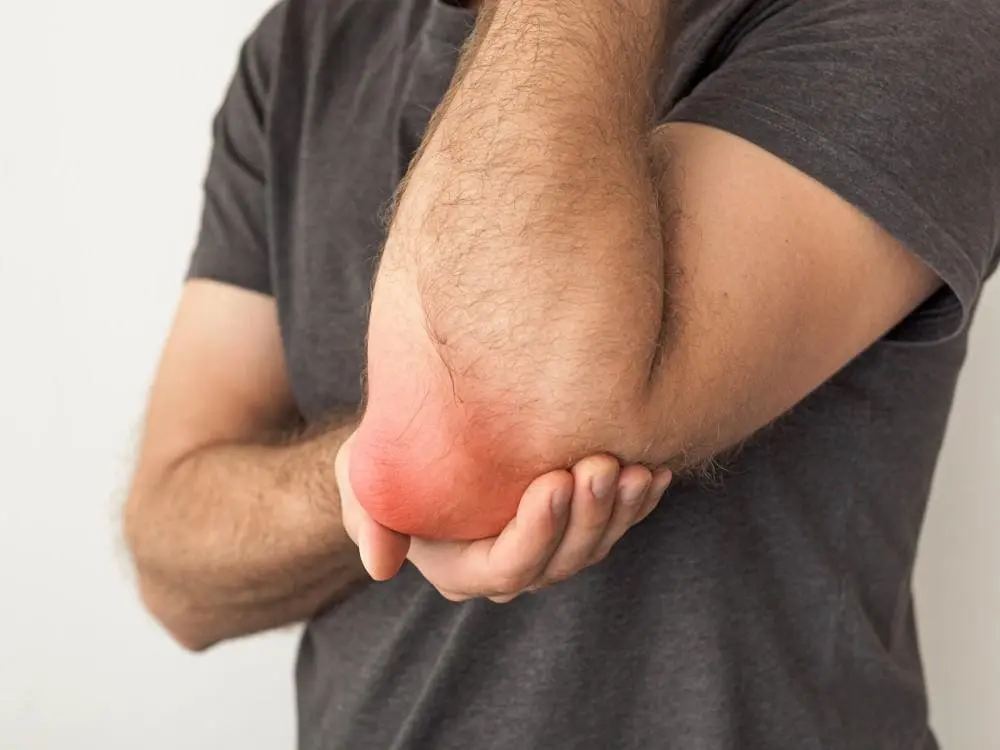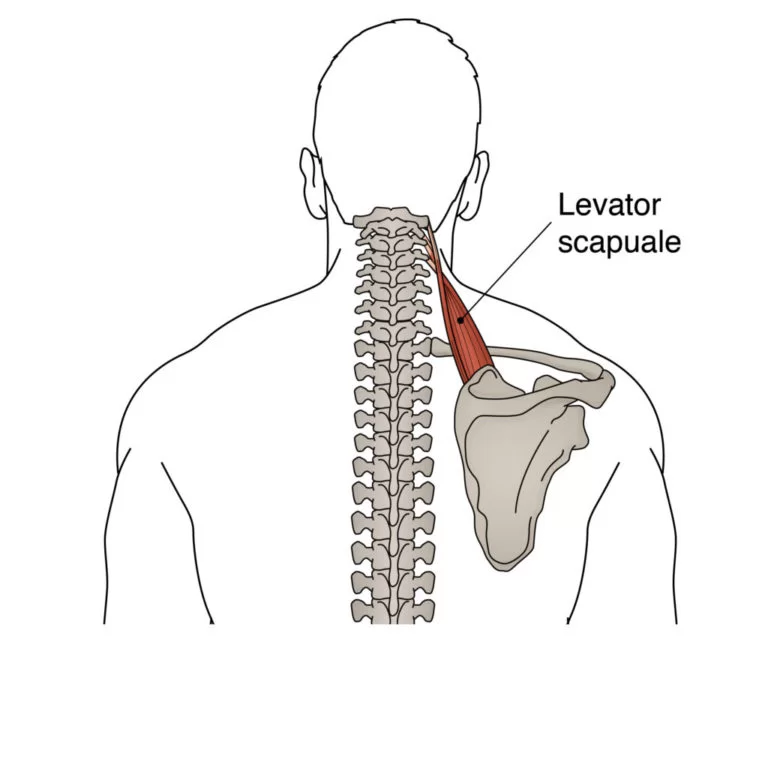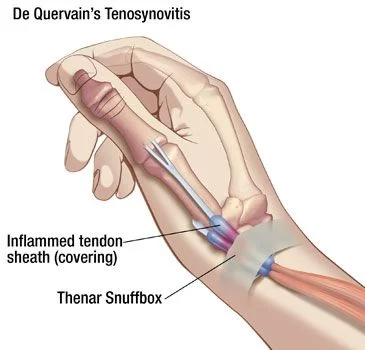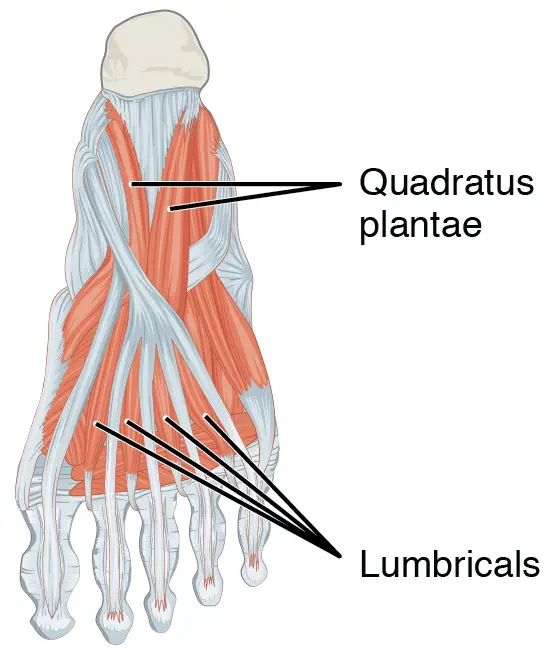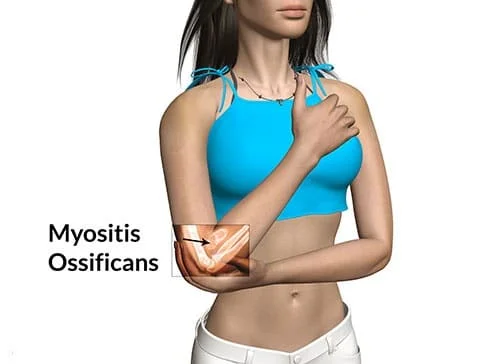Elbow Bursitis
What is Elbow Bursitis?
Elbow bursitis, also known as olecranon bursitis, is a condition characterized by inflammation and swelling of the bursa located at the tip of the elbow. The bursa is a small, fluid-filled sac that acts as a cushion between bones and soft tissues, helping to reduce friction during movement.
When the bursa becomes inflamed, usually due to repetitive pressure or trauma, it can lead to pain, swelling, and limited mobility in the affected elbow.
This condition can be caused by various factors, including repetitive motions such as leaning on the elbows for extended periods, direct trauma to the elbow, or underlying medical conditions such as arthritis or gout. Elbow bursitis can affect individuals of all ages and activity levels, from athletes to office workers.
While elbow bursitis can cause discomfort and inconvenience, it is typically treatable with conservative measures such as rest, ice therapy, and over-the-counter pain medications. In some cases, aspiration of the bursa fluid or corticosteroid injections may be necessary to reduce inflammation and alleviate symptoms. Rarely, surgical intervention may be recommended for severe or recurrent cases.
Early recognition and appropriate management of elbow bursitis can help prevent complications and promote faster recovery, allowing individuals to resume their normal activities with minimal disruption.
Introduction
The bursae around the elbow are a group of synovial-lined bursae, they are separated into bursae in the cubital fossa and surrounding the olecranon. An inflammation of the bursa is called olecranon bursitis. The bursa is vulnerable to injury and infection due to its shallow location and restricted blood flow. Throughout the body, bursae are found in large numbers and serve as cushions between soft tissues like skin and bones. A tiny quantity of lubricating fluid that they contain permits the soft tissues to effortlessly glide over the underlying bone.
The olecranon bursa is flat in normal anatomy. More fluid will build up in the bursa and bursitis will occur if it gets irritated or inflamed.
Bursae Olecranon:
- Situated between the olecranon and the subcutaneous tissue is the superficial olecranon bursa.
- The subtendinous olecranon bursa is located deep in the triceps brachii tendon and between the olecranon’s tip.
- Near its insertion into the olecranon, the intratendinous olecranon bursa is located in the triceps brachii tendon.
Bursae cubital:
- The bicipitoradial bursa is located in the medial antecubital fossa, between the distal biceps brachii tendon and the radius tuberosity.
- The interosseous bursa is located beside the brachialis muscle and next to the biceps brachii tendon. About 20% of people experience it.
Others:
Other, less typical bursae consist of;
- Olecranon bursa (may consist of many parts)
- Internal bursa of the medial epicondyle
- Lateral epicondyle subcutaneous bursa
- Anconeus/subanconeous bursae bursa
- Located at the extensor carpi radialis brevis origin.
- Bursae of the ulna nerve
The Elbow Joint’s Structure:
Articulating Surfaces:
There are two distinct articulations in the elbow joint:
- Humerus’s trochlea and the ulna’s trochlear notch.
- Humerus’s capitulum and the radius’s head.
Elbow joints have capsules surrounding them, just like all other synovial joints. This is solid and fibrous, strengthening the joint. When the joint capsule expands medially and laterally, collateral ligaments form, providing stability for arm flexion and extension.
Bursas are shaped like sacs that hold tiny amounts of synovial fluid. It functions by lessening the amount of contact that arises from the movement of bones, tendons, and skin. Despite the large number of bursae in the elbow, only a few are clinically significant;
- Intratendinous olecranon: A tendon found inside the triceps brachii is called the intratendinous olecranon.
- Subtendinous olecranon: During arm extension and flexion, the subtendinous olecranon reduces friction between the olecranon and the triceps brachii tendon.
- Subcutaneous olecranon bursa: Olecranon bursitis is associated with the subcutaneous olecranon bursa, which is located between the olecranon and the surrounding connective tissue.
Ligaments:
- Elbow joint capsule encouragement and support is provided by medial and lateral ligaments.
- Stretching from the lateral epicondyle and merging with the radius annular ligament (a ligament from the proximal radioulnar joint), the radial collateral ligament is located on the lateral side of the joint.
- The ulnar collateral ligament connects to the olecranon and coronoid process of the ulna after emerging from the medial epicondyle.
Blood Supply:
- The elbow joint acquires an excellent arterial supply from the surrounding network of vessels, which is composed of branches of the brachial artery.
Innervation:
- The medial, musculocutaneous, radial, and ulnar nerves all have branches that innervate the elbow joint.
Muscles:
The elbow joint’s bone orientation results in a hinge-type synovial joint that permits forearm flexion and extension;
- Flexion: Brachialis, biceps, the brachii, and brachioradialis
- Extension: The brachii triceps and Anconeus muscles
Muscles with actions at the elbow joint,
- In the sagittal plane, the humeroulnar articulation primarily performs flexion and extension; in the neutral position, flexion is limited to 150º and extension to 0º.
- Elbow flexion is achieved by the brachii, brachialis, brachioradialis, and pronator teres biceps.
- Elbow extension is accomplished by the triceps brachii and anconeus.
- Supination is the anatomical position for the proximal radioulnar joint, which can also be pronated.
- Complementary movement at the distal radioulnar articulation is necessary for the proximal radioulnar joint to perform its functions fully.
- Pronator teres and pronator quadratus tilt forward the finger, forearm pleading at the elbow is performed proximally by the supinator and biceps the brachii.
Muscles surrounding the elbow joint:
- Along with its attachments to the flexor carpi radialis, the palmaris longus (if present), the humeroulnar head of the flexor digitorum superficialis, and the humeral head of the flexor carpi ulnaris at the common flexor origin, the humeral head of the pronator teres is attached to the medial epicondyle of the humerus anteriorly.
- The ulnar heads of the flexor carpi ulnaris attach at the olecranon, and the ulnar heads of the pronator teres attach at the coronoid process.
- The coronoid process is touched by the humeroulnar head of the flexor digitorum superficialis.
- The proximal attachment of the extensor carpi radialis longus is located posteriorly at the lateral supracondylar ridge.
- The proximal attachment points of the extensor carpi radialis brevis, extensor digitorum, and extensor digiti minimi are located at the lateral epicondyle of the humerus at the common extensor origin, and they all cross the joint.
Epidemiology:
A rather common ailment is olecranon bursitis. Certain functional activities (like writing) may be limited by morbidity resulting from posterior elbow pain. A lot of people get olecranon bursitis. This condition does not have a mortality rate. Activity limitation and morbidity are brought on by posterior elbow pain. Men between 30 and 60 years old are usually affected.
- In two-thirds of nonseptic cases, sports injuries or recurrent trauma cause bursa hemorrhage or the release of inflammatory mediators.
- There is no racial or genetic tendency.
- Olecranon bursitis can affect adults as well as kids.
- Those technicians who lean on their elbows and crawl on their knees in confined locations are particularly vulnerable.
Pathophysiology:
In reaction to the trigger, which may be trauma or the introduction of an infectious pathogen, the bursa undergoes reactive inflammation. The process of inflammation causes the escape of protein and synovial fluid into the bursa. The result is the illness’s easily identifiable circular swelling.
Causes of Elbow Bursitis
Numerous factors can lead to elbow bursitis.
Trauma:
- A forceful hit to the elbow tip may induce the bursa to overproduce fluid and enlarge.
Prolonged pressure:
- Bursa swelling can occur when an individual rests their elbow on hard surfaces for extended periods, like a tabletop or the armrest of a car or truck. Bursitis of this kind usually takes several months to develop.
- Particularly those working in occupations where one must crawl on one’s knees and rely on one’s elbows, like plumbers or AC professionals, are more susceptible.
- The development of olecranon bursitis can also be triggered by specific sports activities, such as extended plank holds.
Infection:
- An infection could result from germs entering the bursa sac if there is a breach in the skin near the elbow’s tip, as could happen from an insect bite, scrape, or puncture wound.
- Fluid, redness, swelling, and pain are all signs of an inflamed bursa. The fluid may become pus if the infection is not addressed.
Medical conditions:
- Elbow bursitis is linked to certain illnesses, including gout and rheumatoid arthritis.
There are numerous possible reasons why this illness could occur. The most crucial variables at risk are these;
- Exercise, landing on ice, or falling straight onto their elbows
- Direct contact with the elbow while exercising or performing daily tasks
- Reclining on one side, using public transit, or spending a lot of time at one’s elbow while working in an office
- Infection resulting from a skin lesion
- The tendons surrounding the bursa rub together as a result of repeated elbow extension movements.
Signs and symptoms:
Swelling:
- Swelling at the rear of the elbow is frequently the first sign of olecranon bursitis.
Pain:
- Direct pressure on the elbow, as when the elbow is rested on a hard surface, is the most common cause of pain.
- Sometimes bending the elbow causes pain. Some people only experience swelling as pain.
Redness or warmth:
- The olecranon bursa may occasionally become infected. Skin that is infected with an olecranon bursa typically becomes red and warm.
- An olecranon bursa infection can also cause a person to become feverish.
Who is affected by elbow bursitis?
Although elbow bursitis can affect anyone, it is more common in certain populations, such as:
- Individuals who work physically: Over time, elbow bursitis is more likely to develop if your job requires you to frequently rely on your elbows or be on your hands and knees.
- Sports and other activities requiring repetitive motions with the elbows and arms can put additional strain on the bursa in your elbow. This is especially true for athletes and individuals with specific hobbies. Elbow bursitis is also more common in musicians.
- People who have certain medical conditions: If you have diabetes, thyroid disease, or arthritis, you’re more likely to get elbow bursitis.
Doctor Examination:
Your doctor will examine your elbow and arm after talking to you about your symptoms and medical background.
X-rays:
- An X-ray may be suggested by your doctor to check for a bone spur or foreign body. In patients with recurrent episodes of elbow bursitis, bone spurs are frequently discovered on the ulna, the point of the elbow bone.
Fluid testing:
- To determine whether gout or an infection is the source of your bursitis, your doctor could need to collect a little needle sample of bursal fluid.
Differential Diagnosis:
- Rheumatoid arthritis
- Osteoarthritis
- Forearm and elbow overuse injuries
- Pseudogout and gout
- fractures of the olecranon
- Avulsion of the triceps tendon
Treatment of Elbow Bursitis
To help you fully recover from elbow bursitis, there are both non-surgical and surgical treatments available. You might need surgery if your elbow bursitis does not get better.
Non-Surgical Treatment:
Your doctor could advise aspirating or taking the fluid out of the bursa with a needle if they think an infection is the cause of your bursitis.
Removing fluid reduces discomfort and provides your physician with a sample that may be examined in a lab to determine whether any germs are present. This informs your physician as well as whether a particular antibiotic is required to treat the infection.
Antibiotics may be prescribed by your doctor before the specific kind of infection is determined. This is to stop the infection from getting worse. Currently, your doctor may prescribe an antibiotic to address a variety of potential infections.
Nonsurgical treatment for a noninfected bursa: If an infection is not the cause of the bursitis, there are various treatment options.
- Elbow pads: You can use an elbow pad to provide some elbow cushioning.
- Activities shift: Steer clear of activities that put pressure on your swelling elbow directly.
- Split: In addition to keeping your elbow straight, a splint can assist keep the skin around your bent elbow from becoming tight.
- Pharmaceuticals: Oral treatments may be used to treat your symptoms and reduce swelling, such as ibuprofen or other non-steroidal anti-inflammatory drugs (NSAIDs).
Following a period of three to six weeks, your doctor can suggest draining the bursa of fluid and administering an injection of corticosteroid medication if the swelling and pain still do not subside. The anti-inflammatory properties of the steroid medication make it more potent than the oral treatment.
- Injections of corticosteroids can effectively reduce pain and edema in certain people.
- However, injections of corticosteroids cause no symptom relief for certain people.
Surgical Procedure:
Surgery to treat a bursa infection:
- Surgery to remove the entire bursa may be required if the infection does not resolve with medications or by draining fluid from the elbow.
- It is possible to combine this operation with further intravenous or oral antibiotic usage. Usually, the bursa regenerates over several months as a typically functioning, non-inflammatory bursa.
Procedure for a bursa that is not infected:
- Surgery could still be advised if nonsurgical therapy is ineffective for elbow bursitis even if it is not the consequence of an infection. In this instance, the bursa removal surgery is typically done as an outpatient treatment.
- Not a single muscle, ligament, or joint structure is affected by the procedure.
Management of Physical Therapy:
Physical and occupational therapy are often indicated to speed up the healing process, but they are not always necessary. It is advised that patients with olecranon bursitis frequently follow the RICE treatment protocol. Rice is an acronym for elevation, compression, rest, and ice.
Other physical therapy techniques may also be beneficial in lowering inflammation and pain. For instance, electrical stimulation and the technique. These treatments aren’t necessary for the majority of olecranon bursitis patients, though.
Joint mobilization:
- Joint mobilizations may be used by your physical therapist if the tightness surrounding your joint is putting pressure on your bursa and causing inflammation. These specific manual movement techniques can help you move more fluidly and relieve pressure from your inflamed bursa.
Ice:
- Your therapist may apply ice to your body if your bursa is inflamed. It has been demonstrated that using ice can reduce localized blood flow, which can help to reduce bursa inflammation and its associated pain. Remember that while applying ice to your bursitis may feel good and reduce your pain, there is no proof doing so will improve your condition over time.
Heat:
- Heat treatment is an option for persistent pain brought on by bursa irritation. Heat promotes circulation and can help injured bursa tissues receive much-needed blood and oxygen. Proceed with caution as heat can cause skin burns, when applying heat, adhere to your physical therapist’s instructions. Similar to ice, applying heat to bursitis may feel good, but no proof doing so will help patients’ condition more than not using heat.
Ultrasound:
- In physical therapy, ultrasound is a deep heating technique that is occasionally used. Your inflamed bursa gets heated by ultrasound treatment, which increases blood flow, draws in oxygen, and flushes out inflammatory cells.
Massage:
- Your physical therapist may apply massage techniques to help release tension if your bursa is becoming pinched and inflamed due to tight tissues. Massage has the potential to enhance blood circulation, reduce discomfort, and optimize bodily motion.
Exercises designed specifically to improve your condition should be added to any treatment prescribed by your physical therapist. Once your bursitis has been successfully treated, your therapist should teach you how to avoid future issues and give you the tools to learn how to self-manage your condition with a suitable home exercise program.
A physical therapist can also educate the patient and provide compensatory techniques for the upper extremity that is injured and should be rested until better. Surgery can be necessary if the patient develops worse and doesn’t respond to conservative treatment. It may be suggested that a patient receive physical therapy following a bursal excision (bursectomy) to preserve or restore elbow range of motion and strength.
Prognosis:
If there are no significant medical co-morbidities, particularly if there are immune-suppressive conditions, olecranon bursitis is usually benign. There is very little possibility that an infectious bursitis will lead to a systemic infection in a generally healthy patient.
Compared to the risk of developing systemic disease, the young, healthy patient may be more likely to experience spontaneous relief without treatment. More objective research is required to support this claim, and careful treatment plus observation typically carries a higher risk of defects and other issues.
Prevention:
While it is not possible to prevent all cases of bursitis, you can lessen its severity. The chance of outbreaks in the future can be reduced.
Try to limit the amount of stress you place on the joint by avoiding lifting heavy objects. However, strengthening your muscles and exercising can help ward off injuries in the future.
If you have bursitis or are at risk for it, always warm up and stretch before doing any exercise or activity that might put a strain on your joints. See a fitness expert for advice on what exercises to do if you’re not sure.
When to consult a doctor:
You need to visit your doctor if;
- You feel your elbow getting warm.
- You get a fever or chills
- You experience bleeding or get a rash
- Your bursa gets very painful or swollen.
- You can’t flex the joint or extend your arm properly.
To find out whether you have an elbow calcium deposit, a bone spur, or a broken bone, your doctor might prescribe tests. Additionally, tests to rule out an undiagnosed inflammatory condition will probably be performed.
To figure out if you have an ongoing infection, your doctor might test your blood or a sample of bursa fluid. They might advise antibiotics if that’s the case.
A fever or chills can occur when a bursa becomes infected, and the affected area may feel warm to the touch. Occasionally, an infected bursitis may leak pus.
Recovery:
In most cases, elbow bursitis heals in a matter of weeks with the right rest and therapy. Your arm will most likely be immobilized with a splint after surgery by your doctor. It will be requested that you rest and adhere to your physician’s orders.
Regaining the use of the elbow usually takes only three or four weeks, but you will need your doctor’s approval. For some people, it could take up to eight weeks to fully recover.
Summary:
The elbow bursa, also known as the olecranon bursa, is a thin fluid-filled sac that sits between the skin and the bony elbow tip in the back of the arm. The bursa serves as a cushion for the elbow’s tip and this sac typically contains very little fluid. But if the bursa becomes irritated or inflamed, it may fill with excess fluid and swell.
Elbow bursitis is a painful condition in which the bursa, a tiny lubricating pouch filled with fluid, overflows and swells. Infections, trauma, extended pressure, or a pre-existing medical condition can all contribute to this condition. It is possible to get rid of symptoms and resume your regular activities with both surgical and non-surgical options.
Usually, successful, non-surgical procedures are the most common. A complete recovery usually occurs in a few weeks, though surgical procedures might be required depending on how severe your condition is.
Although elbow bursitis can be painful, with the right rest and treatment, it frequently goes away.
FAQ:
Elbow bursitis occurs frequently. In over two-thirds of cases, the bursitis is not infectious and is brought on by trauma or sports-related injuries.
With rest and other at-home therapies, elbow bursitis typically recovers in three to six weeks. Once you begin taking your antibiotics, you should start feeling better if you have an infection. Even if your symptoms slow down, it’s still crucial to take the entire prescribed amount.
superficial olecranon bursa
subtendinous olecranon bursa
intratendinous olecranon bursa
The most prevalent superficial bursitis, olecranon bursitis, is frequently responsible for posterior elbow pain and swelling.
Reducing your elbow’s overuse as much as you can is the best way to prevent elbow bursitis. In between instances of vigorous exercise or activity, give your body time to relax and recuperate. Make sure you’re wearing all the necessary protective gear, such as elbow pads if your job or hobbies require you to use your elbows frequently.
The most typical symptoms of bursitis are pain, swelling, and tenderness in the vicinity of a joint. Anti-inflammatory drugs and relaxation are helpful therapies for bursitis.
Anti-inflammatory drugs, bandages, and resting the afflicted area all typically aid in the reduction of inflammation. If bacteria are present, antibiotics are administered. Surgery is considered to remove the inflamed bursa if the symptoms do not improve.
Rest and avoid using the afflicted area excessively. For the first 48 hours following the onset of symptoms, apply ice to minimize swelling. Use moist or dry heat sources, like a heating pad or a warm bath.
The skin turns red and warm if the bursa is contaminated. Infections can spread to other areas of the arm or enter the bloodstream if they are not treated promptly. Severe illness may result from this. An infected bursa may occasionally open spontaneously, meaning it will happen suddenly and on its own, allowing pus to escape.
Elbow bursitis that affects the back is called olecranon bursitis. The lump that develops is commonly referred to as “Popeye elbow” because it resembles the elbow of the animated character Popeye. This type of elbow bursitis can be brought on by an injury, excessive use, or prolonged pressure.
Between the skin and the bony tip of the elbow in the rear of the arm, known as the olecranon, is a tiny sac filled with fluid called the elbow bursa.
A fluid-filled structure called a bursa is found between a tendon and bone or between skin and a tendon. Reducing friction between neighboring moving structures is a bursa’s primary purpose. Bursae surrounding the patella and bursae elsewhere in the knee can be recognized.
The fluid-filled sacs (bursa) that cushion the joints can become painful and swollen (inflamed) when they develop bursitis. It normally goes away in a few weeks with at-home treatment.
Typically, bursitis is a transient ailment. Though it usually doesn’t result in malformation, it could restrict motion.
While inflammatory arthropathies and repetitive strain/overuse, or “micro traumas,” are more common causes of chronic bursitis, acute bursitis usually results from trauma, infection, or crystalline joint disease. When the bursa is palpated, individuals with acute bursitis usually have pain.
A bursa rupture signifies a rip in the bursal sac; the inflammatory bursa fluid subsequently leaks into the surrounding tissue and joint, although it does not necessarily mean that the sac bursts. A bursa rupture can cause swelling, loss of function, severe joint discomfort, and an elevated risk of infection.
The infection can spread quickly up and down the arm if it erodes through the bursal sac. If the fascia, the covering of muscles, becomes inflamed, this could become a life-threatening illness.
It may come naturally to you to stop doing painful activities if you have elbow bursitis. But exercise is your elbow’s best therapy. Because motion keeps your elbow joint from stiffening, it can lessen pain.
Refrain from resting your elbow on its tip for extended periods. Avoid overusing your arm by avoiding repetitive motions that can tear a tendon or bursa. If at all possible, switch hands while performing tasks like sweeping, raking, or gardening.
With your afflicted arm straight by your side, try sleeping on your back. To assist in maintaining your arm and body alignment, use folded blankets or positioning pillows. Refrain from exerting force on the afflicted arm. This will assist in lowering elbow swelling and inflammation.
References:
- Weerakkody and Davis (2018) 19 January. Elbow bursitis. Radiology Wiki. (doi.org/10.53347/rid-57880). Reference within the text: Weerakkody & Davis, 2018
- Weerakkody and Davis (2018) 19 January. Elbow bursitis. Radiology Wiki. (doi.org/10.53347/rid-57880). Reference within the text: Weerakkody & Davis, 2018
- Pangia, J. June 12, 2023. Olecranon bursitis. NCBI Bookshelf – StatPearls. NBK470291/#:~:text=The%20olecranon%20bursa%20is%20synovial,and%20extension%20of%20the%20elbow” Citation within the text: Pangia, 2023
- Mayo Clinic Orthopedics & Sports Medicine: Elbow Bursitis (September 11, 2019). Mayo Clinic Orthopedics & Sports Medicine. elbow bursitis: https://sportsmedicine.mayoclinic.org/condition/ Reference within the text: (Mayo Clinic Orthopedics & Sports Medicine, 2019) – Elbow Bursitis
- TeachMeAnatomy: The Elbow Joint: Structure, Movement, and Teachings (2023, November 2). LearnMeAnatomy. https://teachmeanatomy.info/joints/elbow-joint/for-upper-limb Reference within the text: (The Elbow Joint – Anatomy – Function – TeachMeAnatomy, 2023)
- The Florida Orthopaedic Institute provides information on elbow bursitis. May 12, 2022. The Florida Institute of Orthopedics. elbow bursitis treatment at https://www.floridaortho.com/specialties/elbow-pain-treatment/ Reference within the text: (Florida Orthopaedic Institute, 2022): Elbow Bursitis Information
- Gotter, A. (February 22, 2019). Elbow bursitis: 10 Treatment Options. Healthline. Elbow bursitis: https://www.healthline.com/health/sports-injuries Citation within the text: Gotter, 2019
- Elbow bursitis: trauma or not, it hurts a lot! – Physio Atlas [undated]. The question is whether bursitis of the elbow is a result of trauma or if it hurts just a little. In-Text Citation: (Physio Atlas, n.d.) “Elbow Bursitis: Trauma or Not, It Sure Hurts!”
- C. C. M., Professional (n.d.). Ostecranon bursitis of the elbow. Cleveland Medical Center. elbow olecranon bursitis: https://my.clevelandclinic.org/health/diseases/22553 Reference within the text: (Professional, n.d.)
- Pt, B. S. (March 3, 2022). The Bursa: An Anatomy. Verywell Medical. This page describes the anatomy, function, and treatment of bursae (4686312). Citation inside text: (Pt, 2022)

